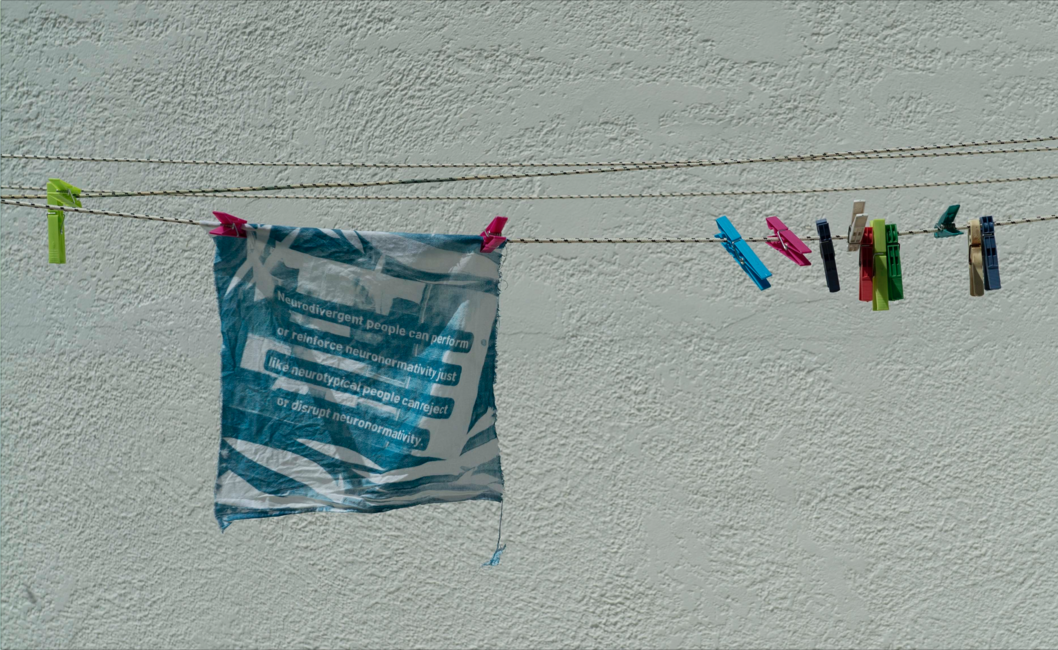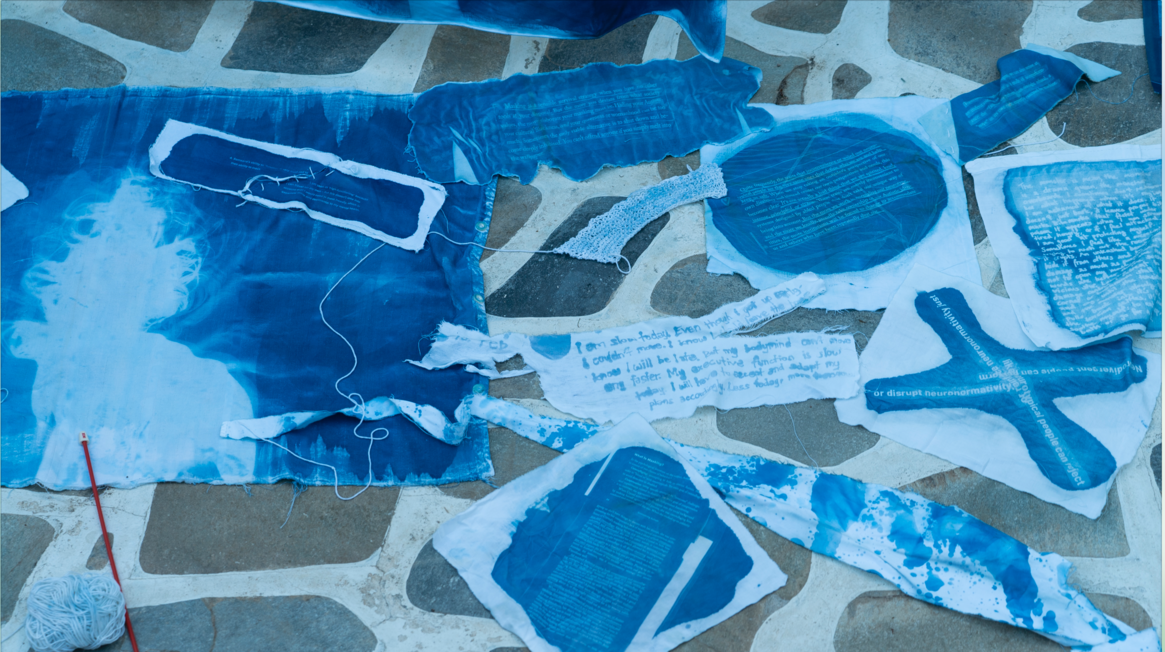Lovis Heuss' work "digestion in blue" is a textile collage of their current research on the neurodivergent coping strategy called masking. Citations of the academic research are paired with Lovis' documentationd of their personal unmasking practice as well as questions which arose during the unmasking workshops they created. Inspired by "disability as method", the arrangements are an approximation of neurodivergent information digestion through the process of cyanotype imprinting and weaving.
__
I left for Greece with the intention to work closer on my master thesis, a kind of focused residency character (some might call it hyperfocus state), which I need to work well, but cannot create in the midst of everyday life back home. With a set amount of time on my hand, a deadline to hand in a first draft of my master thesis text on hand, and a lot of old white cotton bedsheets, I arrived in Amorgós.
Being in the middle of the research phase and struggling with combining the pieces of research I come across into a coherent train of thought, I came across two important nuggets of knowlege which helped me embrace my struggles:
the quote by Walt Withman:
"Do I contradict myself?
Well then I contradict myself.
(I am large, I contain multitudes)."
And the concept "Disability as Method", which critical diasability professor Arseli Dokumaci describes as folows:
"Feminist, critical race, disability and queer theory scholars have long questioned the unmarked subject position that patriarchy, racism, colonialism, sexism and ableism have created. What I propose by 'disability as method' draws on these cultural studies traditions that critically examine what, in Robert McRuer's words, constitutes "the order of things, considering how and why it is constructed and naturalized.
This framing of disability takes its lead from what many other disability scholars have already pointed out: the epistemic possibilities that emerge from embodiments of disability (Siebers; Titchkosky and Michalko; Hamraie). If the normate, or the "preferred social body," to use Tobin Siebers's phrasing, remains "presupposed but invisible – until a nonstandard body makes an appearance", then adopting disability as method entails tracing those appearances so as to mark what otherwise goes unmarked in everydayness. This allows us to expose the possibilities that a seemingly neutral world of supports affords the normate body, while putting other bodies out of place. This ignorant occupation of space is what I refer to as 'the habitus of ableism.' "
The process of choosing, copying and printing the loose arrangement of citations was an embodied way of working and understanding text, which on paper often feels flimsy and intangible, slipping my brain before I am able to fully grasp its content.
Starting to weave the concepts into a patchwork of knowlege translated my process into something physical I can refer back to, catching the abstract theories in blue colour and making them tangible for myself.
The process of weaving and arranging helped me to better understand the connections between topics, but also where I am still missing pieces of information, which is presented by the holes in the final artwork.
The patchy, partially ripped, flauntef and re-threaded aesthetics express the acceptance of errors and the incomplete.

